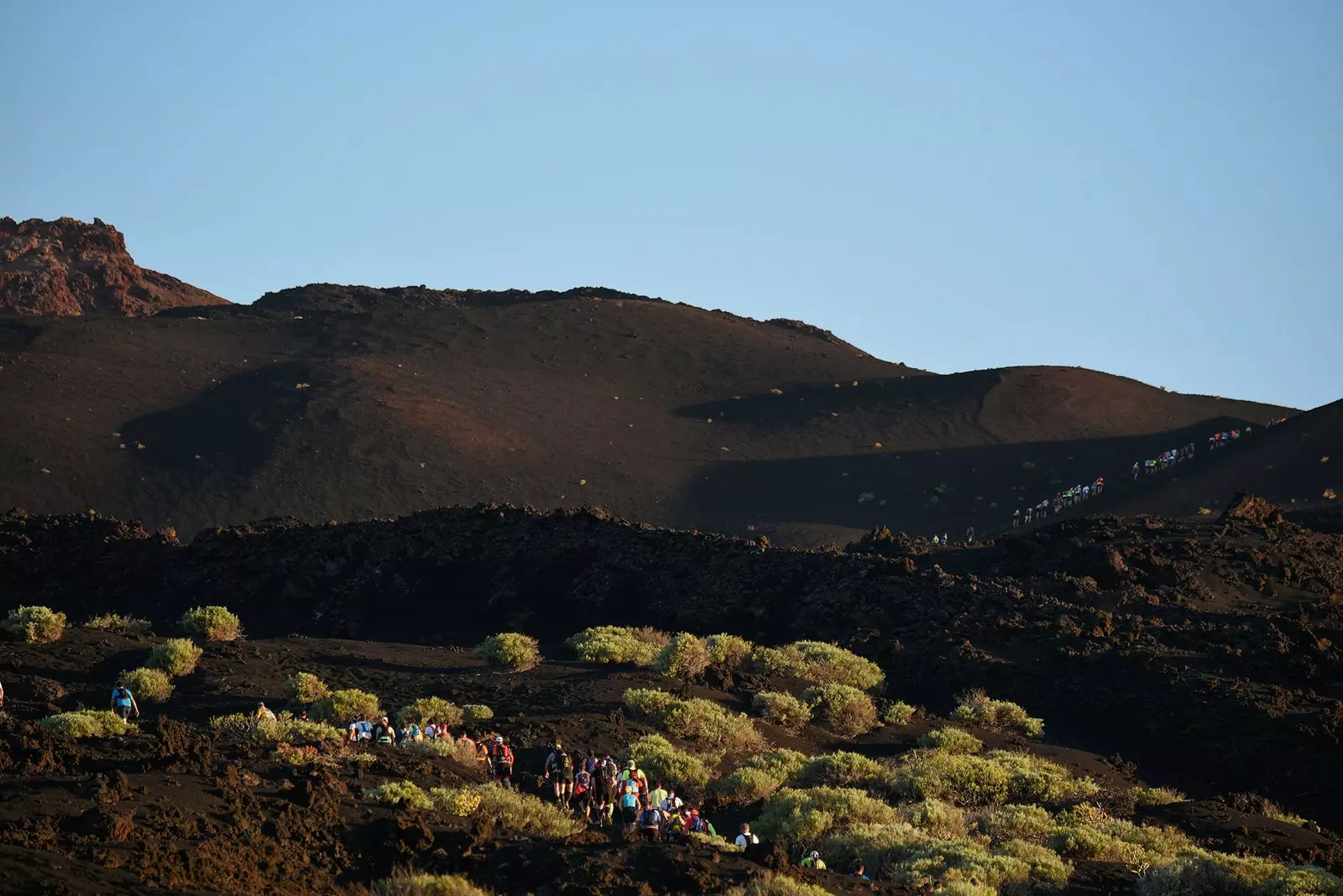
Stories that make La Palma a magical island
TOÑO WANTS TO REACH FOR THE STARS...
On the dizzying climb to the Observatory of Roque de los Muchachos de Garafía the pines are disappearing to give way to the high heather.
The Observatory, one of the astronomical paradises in the world, is part of the Institute of Astrophysics of the Canary Islands and was inaugurated by the King and Queen of Spain in 1985, the date on which the artist from Lanzarote, César Manrique, as a tribute to the Astrophysics Observatory of El Roque de los Muchachos create the Infinity Monument which, bordered by ladders and suckers and with a unique cosmic geometry, looks to the beyond.
Arriving at the observatory is the closest thing to having reached heaven , the clouds stay below like a cotton mat , and there under a pristine sky are the magnos telescopes from 19 countries with more than 60 institutions.
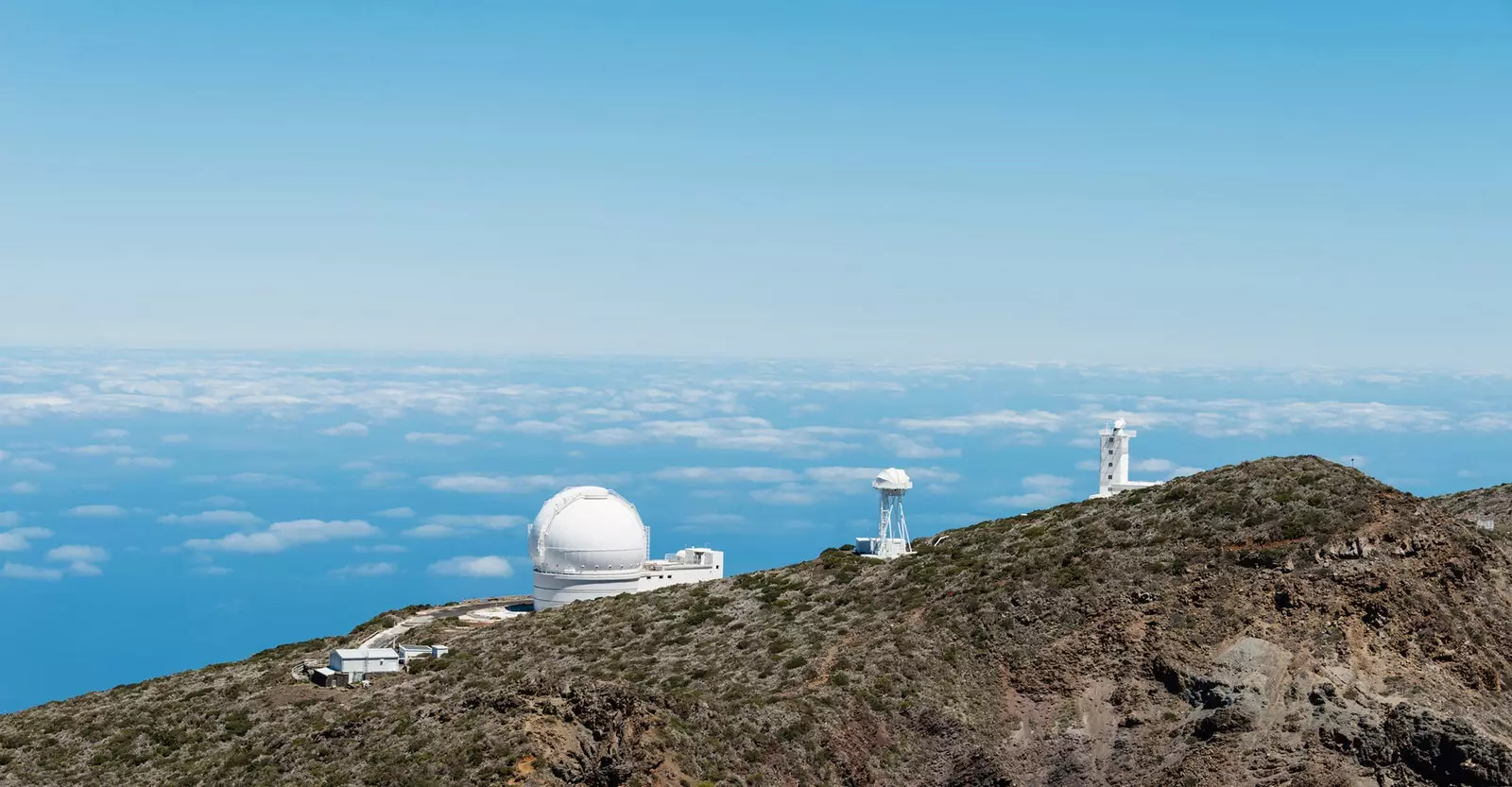
Observatory of Roque de los Muchachos de Garafía
In the center of the observatory you can see the occasional scientist with a clueless air, because whoever reaches the stars is difficult if they have their feet on the ground, and there they wait Antonio Gonzalez, alias Toño, a lover of astronomy, like many more of the islands.
Toño is aware of the privilege of his heaven and since he was young he has dedicated himself to observing and studying it, sharing his wisdom with the visitors for whom he has created Skies-La Palma , a different project manufacture astronomy where, thanks to a team with knowledge of history, hiking, gastronomy, design... he promotes astrotourism-themed products.
Toño has been a collaborator since 2007 Starlight Foundation , and currently one of his approved teachers, without forgetting his images and night videos of him have also been published in different media.
His great weakness is Great Telescope CANARIAS (GTC) in Roque de los Muchachos that promoted by the Institute of Astrophysics of the Canary Islands, began its scientific exploitation in 2009 in order to delve into the study of the origin and evolution of the universe and is truly exceptional thanks to the image quality, technical reliability and observational efficacy.
Toño has his own telescope that accompanies him like a pet on many night excursions to delight his groups with the contemplation of a sky with more stars than any other.
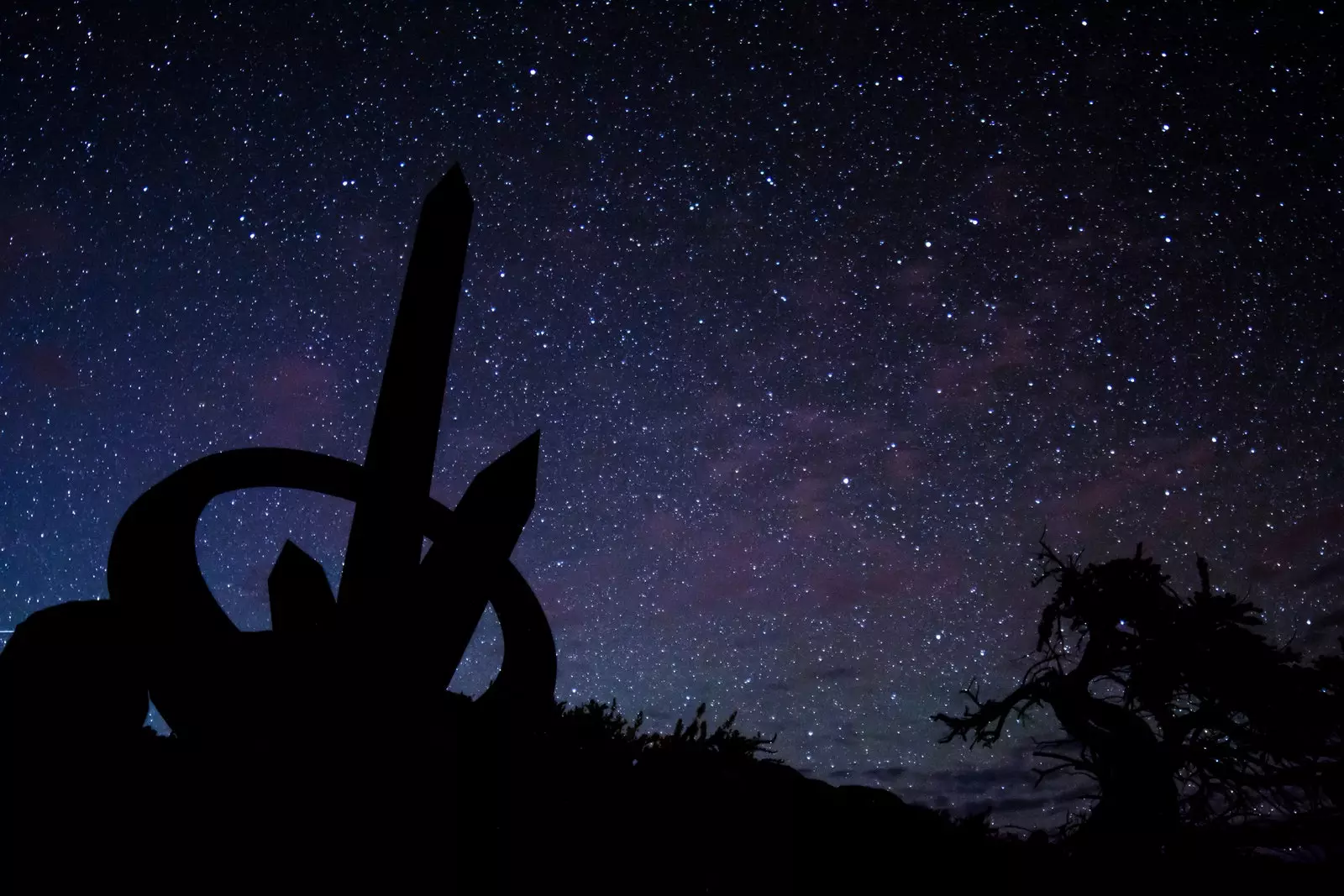
Monument to Infinity in La Palma
FRANCISCO'S PLATANOLOGICAL, WHERE EVERYTHING HAS ITS WHY
Coming down from the heights, the climate softens and the banana trees make an appearance in such quantity that it is understood how bananas account for 60% of the island economy.
However, there are many ways to grow it and in the Platanological , on the banks of the Puerto de Naos Beach ( the most visited on the island, in the area of the Llanos de Aridane), there is a eco-farm converted into an orchard of bananas, papayas and flowers.
Francisco Garcia Lazaro talks about his sustainable banana exploitation during the pleasant walk through the subtropical botanical garden where, according to himself, "you smell, feel, know and taste".
Originally from the Basque Country, he represents his narration, enlivening it with gestures and examples, with an amusing and illustrative eloquence when he shows the curious flower of the banana already full of soft and tasty fruits.
Also when he explains how each insect fulfills its task in the good growth of the plantation, which is based on a chain of tasks where each living being finds its way of surviving and, at the same time, has its essential role for the good development of the Platanológico.
The farm is adapted and equipped for events and visits and has passable paths and a school garden. Donkeys, goats and dogs are not lacking in a paradisiacal space where Francisco came one day to fulfill his dream and he achieved it.
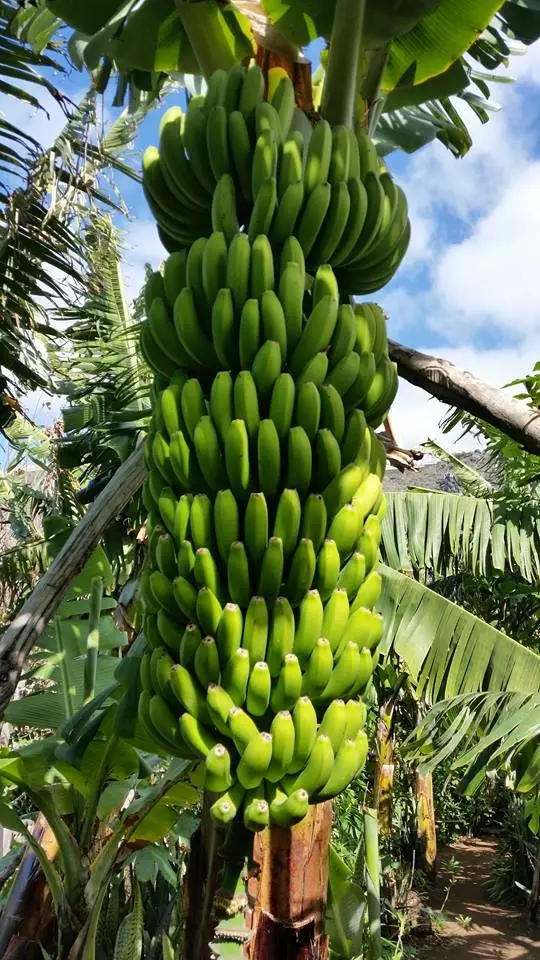
The Curious Way Bananas Grow
BLOOD AND WINE MADE VICKY BACK TO FUENCALIENTE...
Victoria Torres is the fifth generation of one of the oldest wineries on the island, Matias i Torres . These are located at the southern end of the Fuencaliente subzone. Victoria now considers herself deeply linked to the long family tradition, which dates back to 1885, despite the fact that for many years she was away from the world of wine, studying History of art, Social Education, Nautical and Marine Sciences.
When she came back to help her father, her grape caught her again. So much so that since then, Vicky has dedicated her time, her life, to that wine for which local or autochthonous varieties are used and are produced as a single variety and single-vineyard wines.
Her star wine is Naturally Sweet Aromatic Malvasia , about which Josep –Pitu– Roca commented, in his article Evocation of infinity in La Palma ...: "Perhaps if Neruda had known La Palma, with a glass in hand of this malvasia palm admiring the sky, we would know what infinity is like".
Matías i Torres has been the first winery to join the brand La Palma World Biosphere Reserve in which its grapes grow with the privilege of the diversity of its soil of volcanic origin and a microclimate that protects them, and that makes the vines grow on their own with a minimalist intervention by the hand of man. This is how Victoria tells us, while she offers a tasting of her wines full of authenticity, like the one she emanates in every gesture and word.
ANDRÉS HERNÁNDEZ INHERITED HIS FAMILY'S Stubbornness
The stage throughout the call Volcano Route , whose last eruption, that of the Teneguía volcano, was in 1971, it's spooky.
During the descent to Salt flats of Fuencaliente , the guide carries a long stick with which he gives the famous shepherd's jump , swallowing meters of land. The lunar landscape is of a singular beauty in which the reddish and black tones , which will be dotted with timid vegetation that tries to make its way through this inhospitable terrain.
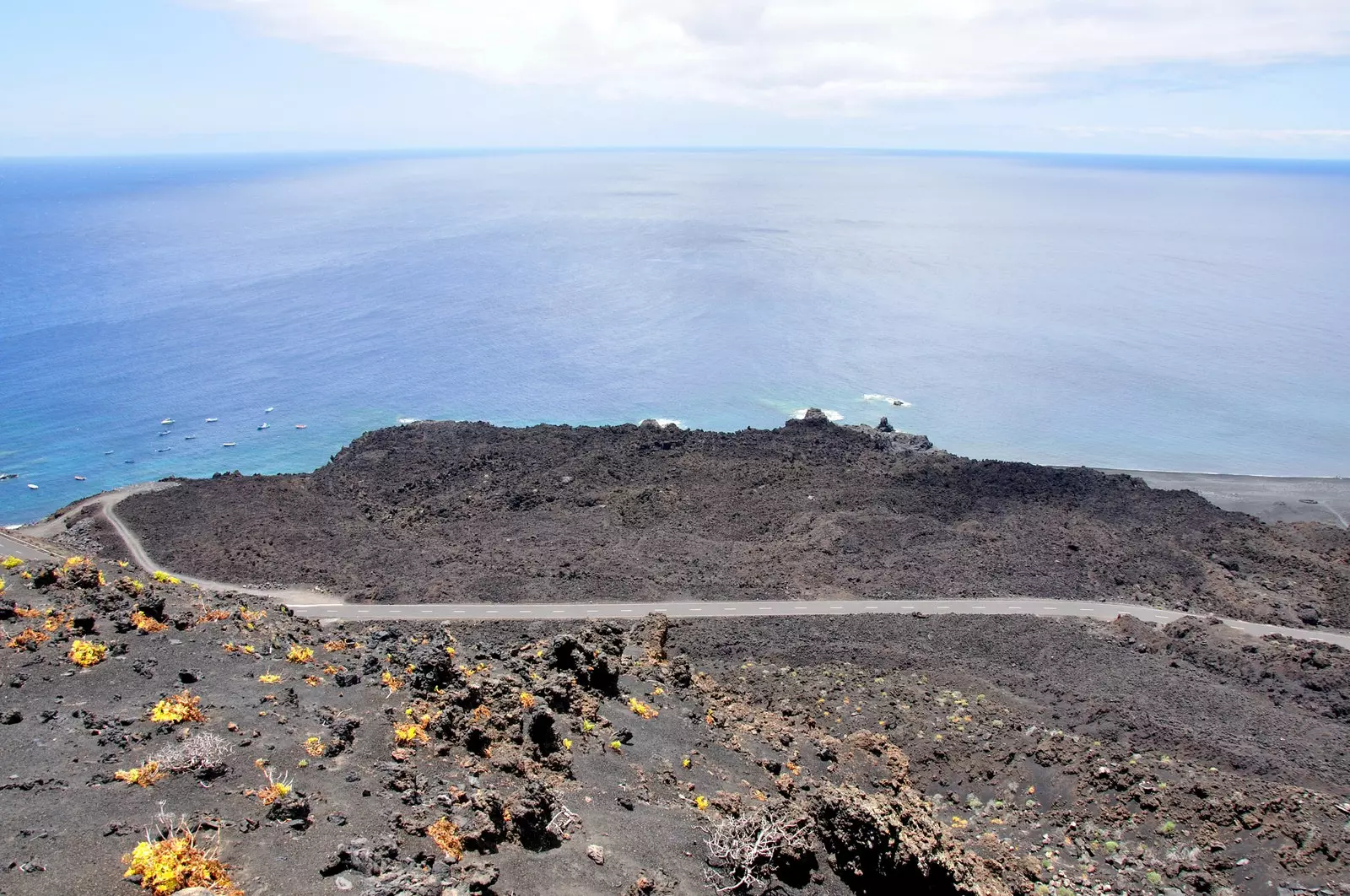
The Route of the Volcanoes in La Palma
Finally you reach the headlights, the former affected by the eruption of Teneguía , and the new currently in operation , built in 1985 and located next to the old one that, today, restored, houses the headquarters of the Interpretation Center of the Marine Reserve of the Island of La Palma and the Museum of the Sea.
Next to the lighthouses, the fishermen's refuge and the small black sand beach. A few meters, the Salinas de Fuencaliente with its reddish and white tones They form a beautiful picture contrasting with the volcanic rock and the sea.
The Salt flats of Fuencaliente were bought at public auction in 1967 by Fernando Hernandez Rodriguez with the idea of supplying salt to the island and perhaps influenced by his wife of Lanzarote origin where salt cultivation is essential.
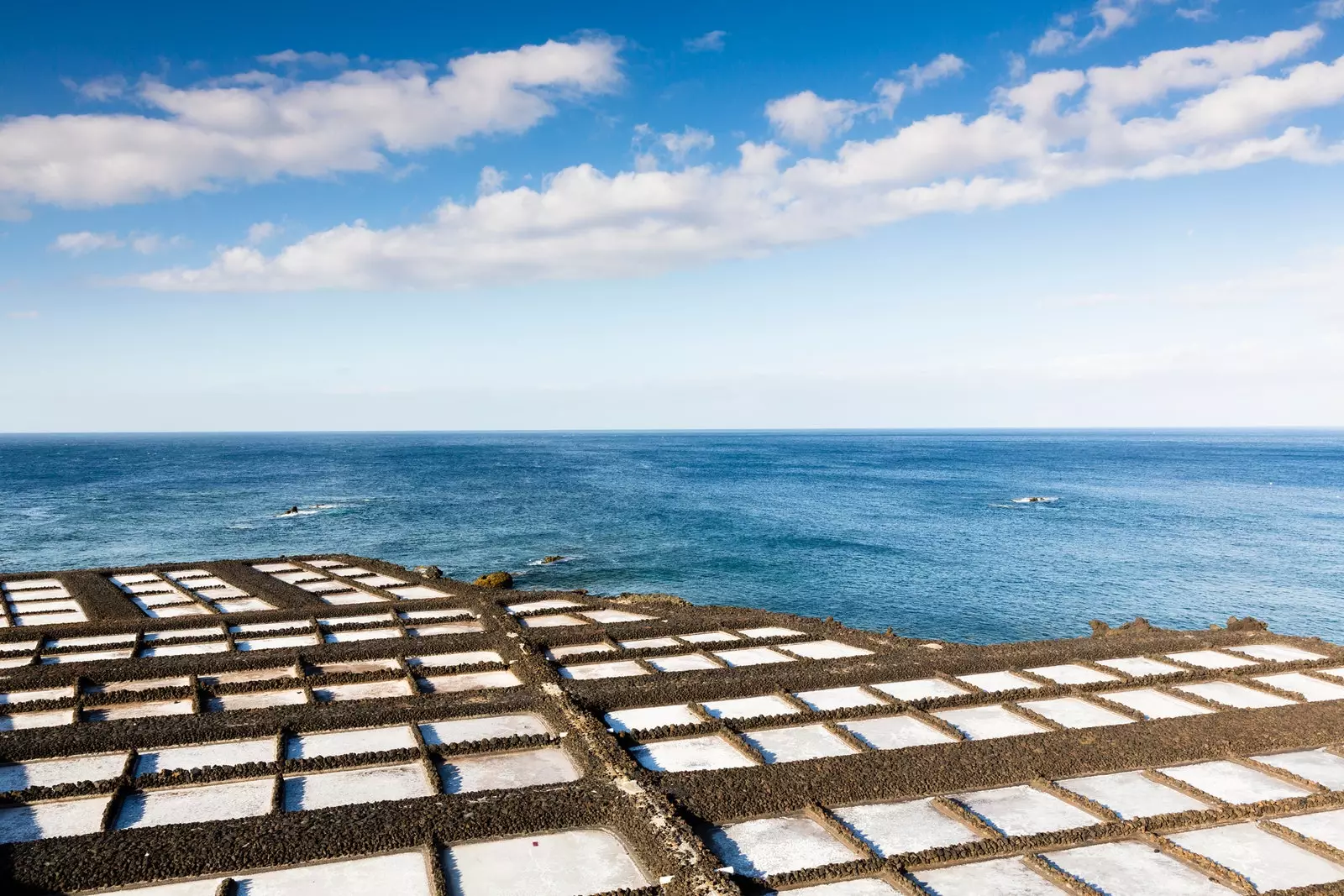
Salt flats of Fuencaliente
According to his grandson Andrés, today owner , Las Salinas is a family business that was born due to the stubbornness of the family who, despite the bad omens, not having had electricity until 2005 and the eruption of the Teneguía volcano that they experienced firsthand, they did not give up their efforts.
And there they are, with their pastel pink tone due to the different organisms that live in them, continuing the model of those of Lanzarote. Its different elements (cookers, cuttings, etc.) have an essential component, the mud , which performs the functions of union, insulation and waterproofing, producing 600 tons of salt per year and 10 tons of fleur de sel (a type of salt that is born at dusk with reddish tones and a less bitter taste than the usual one used as a condiment) .
Andrés tells how starting with the production of fleur de sel in 2007, a German company bought half of the production relatively recently and since then there is a lot of demand. In its theme restaurant you can taste lobsters with salt, brines, fish with salt, and the best bigeye (canarian fish).
